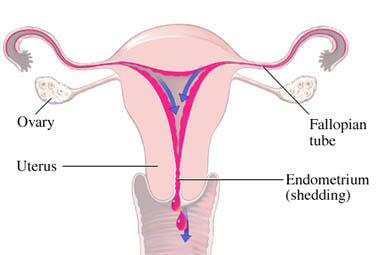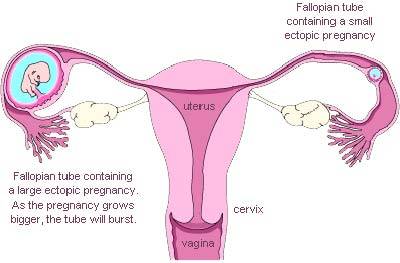Ectopic pregnancy is the result of a flaw in human reproductive physiology that allows the conceptus to implant and mature outside the endometrial cavity (see the image below), which ultimately ends in the death of the fetus. Without timely diagnosis and treatment, ectopic pregnancy can become a life-threatening situation


What is an ectopic pregnancy? What does an ectopic?
An ectopic pregnancy (EP) is a condition in which a fertilized egg settles and grows in any location other than the inner lining of the uterus. The vast majority of ectopic pregnancies are so-called tubal pregnancies and occur in the Fallopian tube. However, they can occur in other locations, such as the ovary, cervix, and abdominal cavity. An ectopic pregnancy occurs in about one in 1%-2% of all pregnancies. A molar pregnancy differs from an ectopic pregnancy in that it is usually a mass of tissue derived from an egg with incomplete genetic information that grows in the uterus in a grape-like mass that can cause symptoms to those of pregnancy.
The major health risk of ectopic pregnancy is rupture leading to internal bleeding. Before the 19th century, the mortality rate (death rate) from ectopic pregnancies exceeded 50%. By the end of the 19th century, the mortality rate dropped to five percent because of surgical intervention. Statistics suggest that with current advances in early detection, the mortality rate has improved to less than five in 10,000. The survival rate from ectopic pregnancies is improving even though the incidence of ectopic pregnancies is also increasing. The major reason for a poor outcome is failure to seek early medical attention. Ectopic pregnancy remains the leading cause of pregnancy-related death in the first trimester of pregnancy.
In rare cases, an ectopic pregnancy may occur at the same time as an intrauterine pregnancy. This is referred to as heterotopic pregnancy. The incidence of heterotopic pregnancy has risen in recent years due to the increasing use of IVF (in vitro fertilization) and other assisted reproductive technologies (ARTs).
What does an ectopic pregnancy look like?
What are the early and later signs and symptoms of ectopic pregnancy?
The woman may not be aware that she is pregnant. The three classic signs and symptoms of ectopic pregnancy include abdominal pain, the absence of menstrual periods (amenorrhea), and vaginal bleeding or intermittent bleeding (spotting). The however, about 50% of females with an ectopic pregnancy will not have all three signs. These characteristic symptoms occur in ruptured ectopic pregnancies (those accompanied by severe internal bleeding) and non-ruptured ectopic pregnancies. However, while these symptoms are typical for an ectopic pregnancy, they do not mean an ectopic pregnancy is necessarily present and could represent other conditions. In fact, these symptoms also occur with a threatened abortion (miscarriage) in nonectopic pregnancies.
The signs and symptoms of an ectopic pregnancy typically occur six to eight weeks after the last normal menstrual period, but they may occur later if the ectopic pregnancy is not located in the Fallopian tube. Other symptoms of pregnancy (for example, nausea and breast discomfort, etc.) may also be present in ectopic pregnancy. Weakness, dizziness, and a sense of passing out upon standing can (also termed near-syncope) be signs of serious internal bleeding and low blood pressure from a ruptured ectopic pregnancy and require immediate medical attention. Unfortunately, some women with a bleeding ectopic pregnancy do not recognize they have symptoms of ectopic pregnancy. Their diagnosis is delayed until the woman shows signs of shock (for example, low blood pressure, weak and rapid pulse, pale skin and confusion) and often is brought to an emergency department